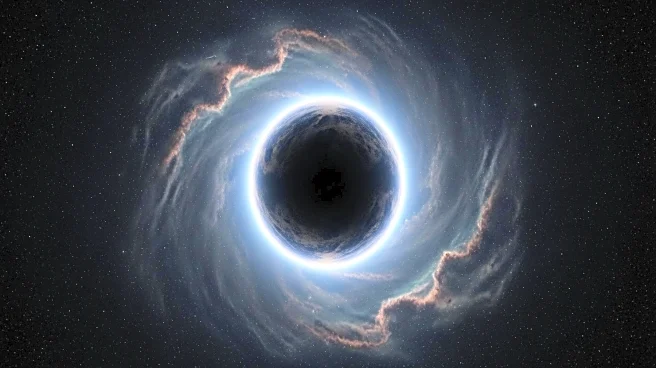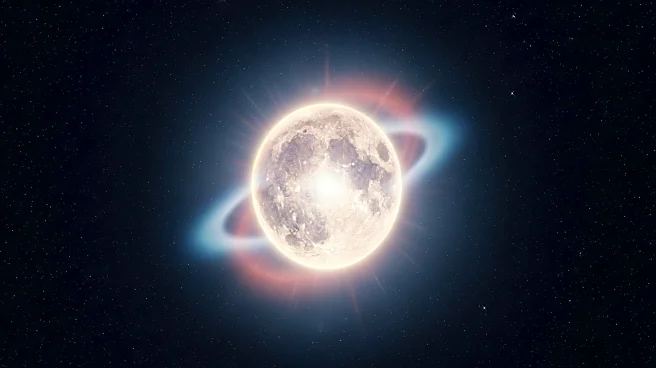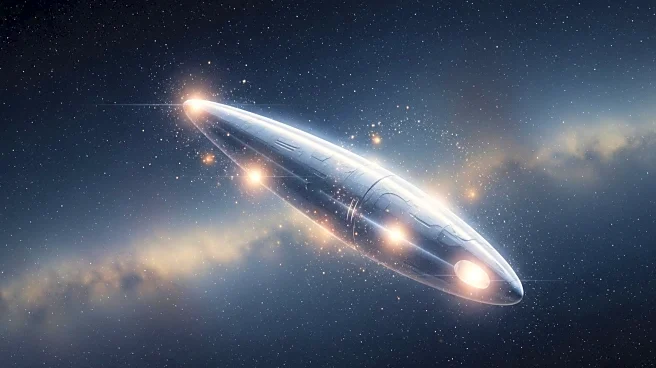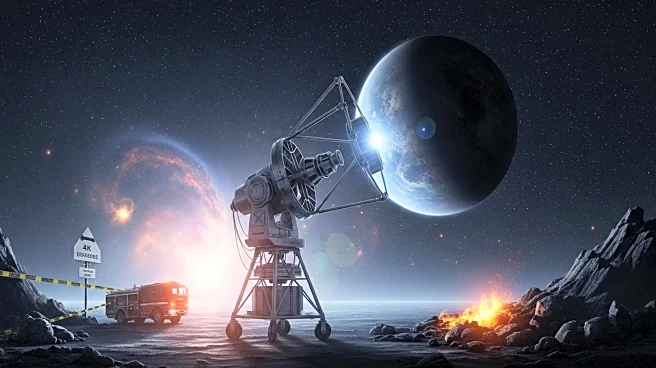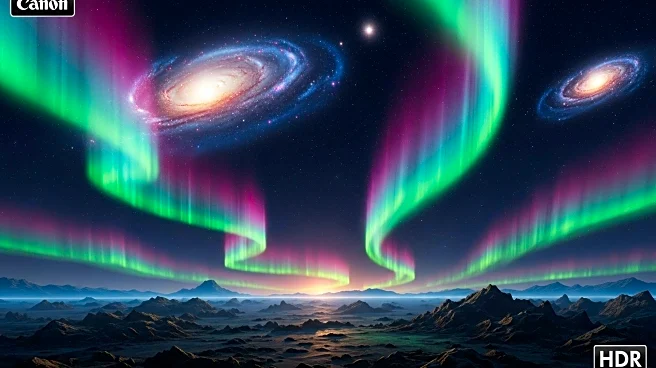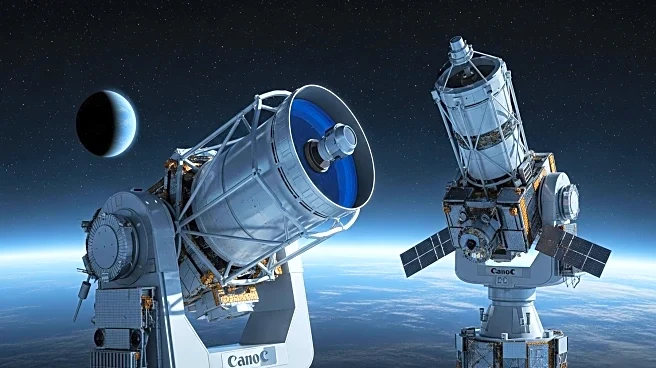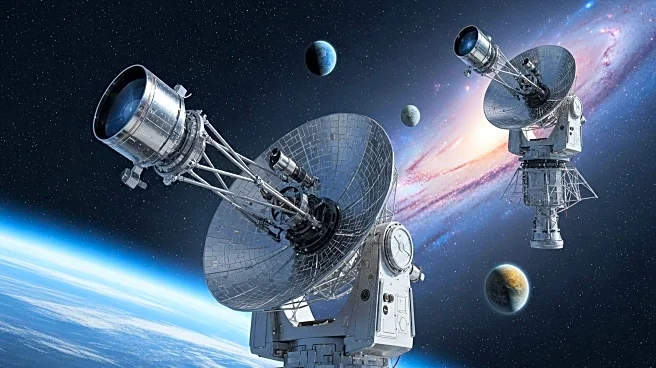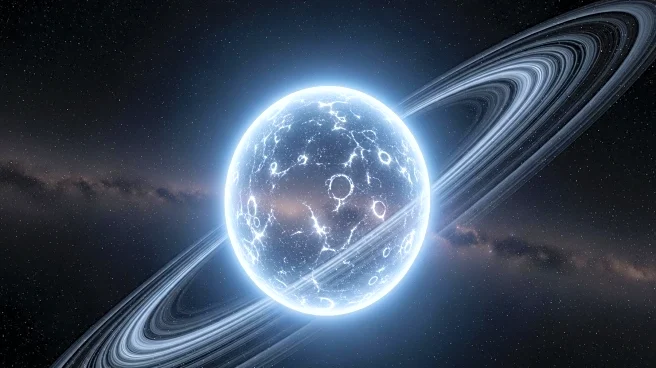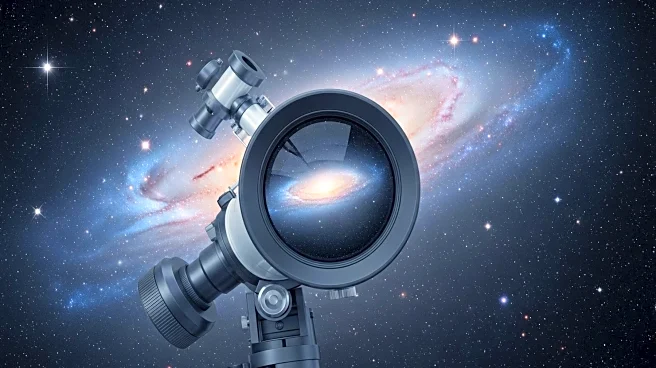What's Happening?
Astronomers have observed a rogue planet, Cha 1107-7626, consuming gas and dust at an unprecedented rate of six billion tons per second. This phenomenon blurs the line between planets and stars, as the planet exhibits characteristics typically associated with stellar objects. Located 620 light years from Earth, Cha 1107-7626 is estimated to be five to ten times the mass of Jupiter and is in its infancy, approximately one to two million years old. The planet's rapid growth is driven by accretion from a surrounding disc, a process influenced by magnetic activity.
Why It's Important?
The discovery of Cha 1107-7626 challenges existing definitions of planets and stars, offering new insights into planetary formation and behavior. Understanding rogue planets and their growth processes can inform theories about the evolution of celestial bodies and the conditions necessary for their development. This research expands our knowledge of the universe's diversity and complexity, potentially influencing future astronomical studies and exploration missions.
Beyond the Headlines
The observation of Cha 1107-7626 raises questions about the nature of planetary formation and the potential for similar objects to exist elsewhere in the universe. It invites speculation about the conditions that could lead to the emergence of life on such planets and the implications for our understanding of habitability. The study also highlights the role of magnetic activity in celestial phenomena, offering new avenues for research into the interactions between planets and their environments.

